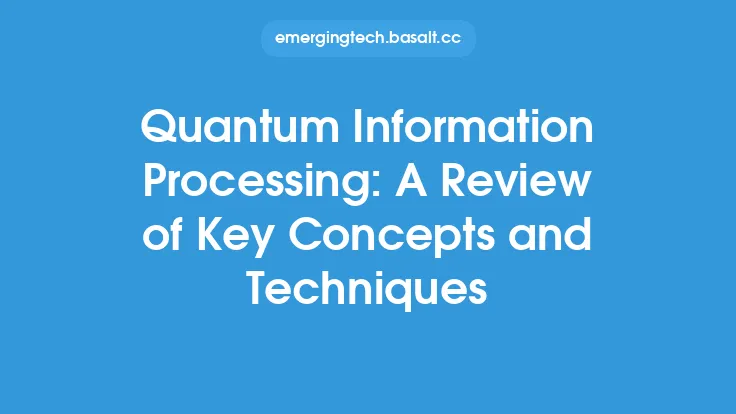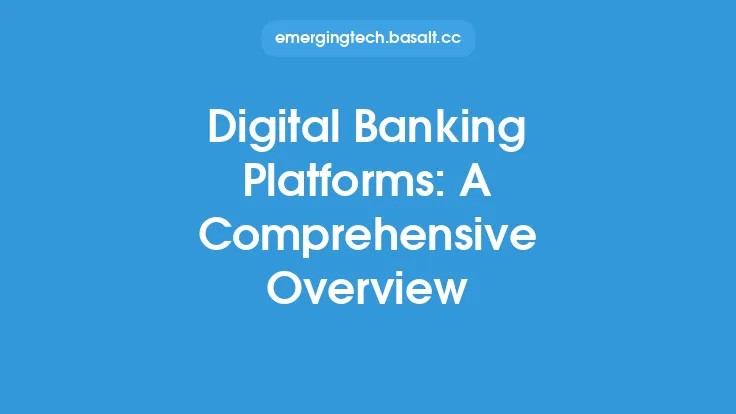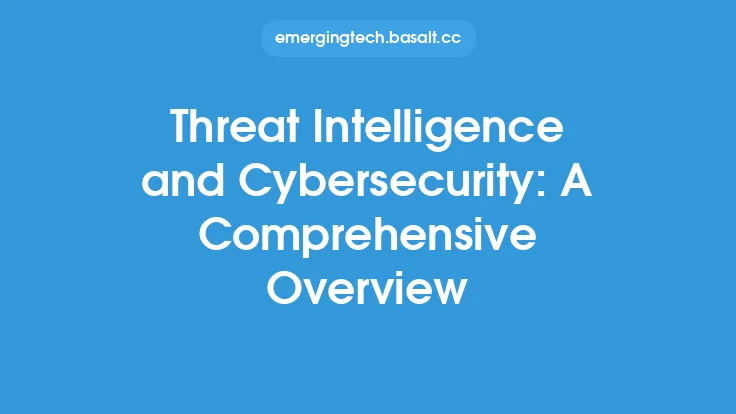Quantum information theory is a fundamental aspect of quantum computing, as it provides the framework for understanding and manipulating the information that is processed and transmitted by quantum systems. At its core, quantum information theory is concerned with the properties and behavior of quantum bits, or qubits, which are the basic units of quantum information. Qubits are unique in that they can exist in multiple states simultaneously, known as a superposition, and can become "entangled" with each other, meaning that the state of one qubit is dependent on the state of the other.
Introduction to Quantum Information
Quantum information is a complex and multifaceted field that draws on concepts from physics, mathematics, and computer science. It is based on the principles of quantum mechanics, which describe the behavior of matter and energy at the atomic and subatomic level. Quantum information theory provides a mathematical framework for understanding and analyzing the properties of quantum systems, including their ability to process and transmit information. This framework is based on a set of fundamental principles, including the no-cloning theorem, which states that it is impossible to create a perfect copy of an arbitrary quantum state, and the monogamy of entanglement, which states that a qubit can only be entangled with one other qubit at a time.
Quantum Entropy and Information
One of the key concepts in quantum information theory is quantum entropy, which is a measure of the uncertainty or randomness of a quantum state. Quantum entropy is a fundamental property of quantum systems, and it plays a critical role in many quantum information processing tasks, including quantum computing and quantum communication. Quantum entropy is typically measured in terms of the von Neumann entropy, which is a mathematical function that quantifies the amount of uncertainty in a quantum state. The von Neumann entropy is defined as S(ρ) = -Tr(ρ log2 ρ), where ρ is the density matrix of the quantum state.
Quantum Channels and Noise
Quantum channels are the quantum equivalent of classical communication channels, and they play a critical role in quantum information processing. A quantum channel is a mathematical model that describes the behavior of a quantum system as it interacts with its environment. Quantum channels can be noisy, meaning that they can introduce errors into the quantum state that is being transmitted. There are several types of quantum noise, including bit flip noise, phase flip noise, and amplitude damping noise. Each type of noise has a different effect on the quantum state, and they can be modeled using different mathematical techniques.
Quantum Error Correction
Quantum error correction is a critical component of quantum information processing, as it provides a way to protect quantum information from the effects of noise and errors. Quantum error correction codes are designed to detect and correct errors that occur during quantum computation and quantum communication. There are several types of quantum error correction codes, including surface codes, Shor codes, and concatenated codes. Each type of code has its own strengths and weaknesses, and they can be used in different contexts to achieve different goals.
Quantum Information Processing
Quantum information processing is a broad field that encompasses a wide range of techniques and technologies for manipulating and processing quantum information. Quantum information processing includes quantum computing, quantum communication, and quantum cryptography, among other areas. Quantum computing is a type of computing that uses quantum-mechanical phenomena, such as superposition and entanglement, to perform calculations and operations on data. Quantum communication is a type of communication that uses quantum-mechanical phenomena to transmit information securely. Quantum cryptography is a type of cryptography that uses quantum-mechanical phenomena to secure communication and protect against eavesdropping.
Quantum Information Theory and Quantum Computing
Quantum information theory is closely related to quantum computing, as it provides the framework for understanding and analyzing the behavior of quantum computers. Quantum computers are devices that use quantum-mechanical phenomena to perform calculations and operations on data. They have the potential to solve certain problems much faster than classical computers, and they are being developed for a wide range of applications, including cryptography, optimization, and simulation. Quantum information theory provides the mathematical framework for understanding the behavior of quantum computers, including their ability to process and transmit quantum information.
Conclusion
In conclusion, quantum information theory is a fundamental aspect of quantum computing, as it provides the framework for understanding and manipulating the information that is processed and transmitted by quantum systems. Quantum information theory is based on a set of fundamental principles, including the no-cloning theorem and the monogamy of entanglement, and it provides a mathematical framework for analyzing the properties of quantum systems. Quantum entropy, quantum channels, and quantum error correction are all critical components of quantum information theory, and they play important roles in many quantum information processing tasks. As quantum computing and quantum communication continue to develop and evolve, quantum information theory will remain a vital and essential tool for understanding and analyzing the behavior of quantum systems.





